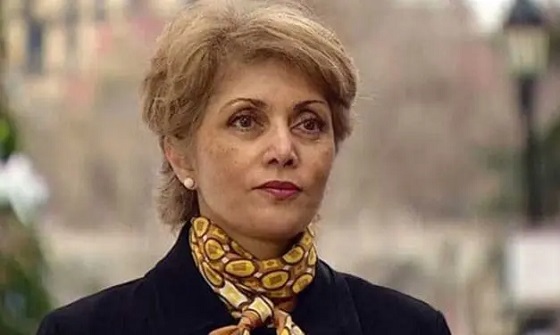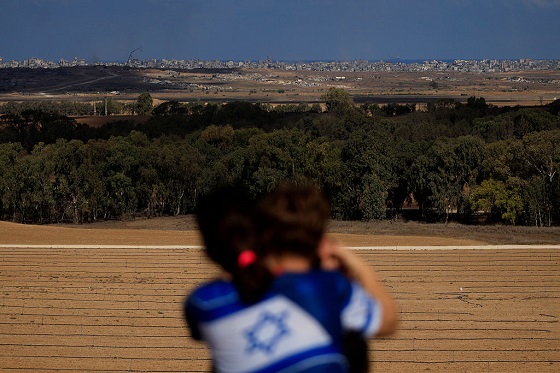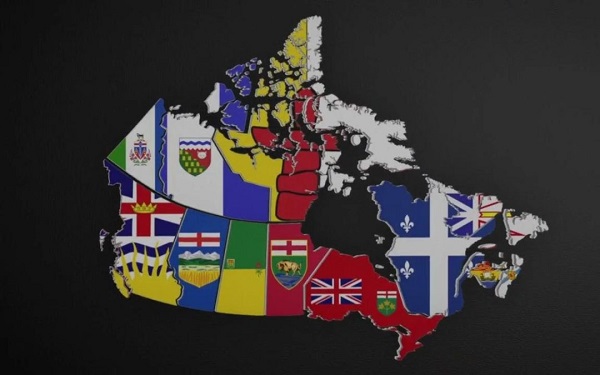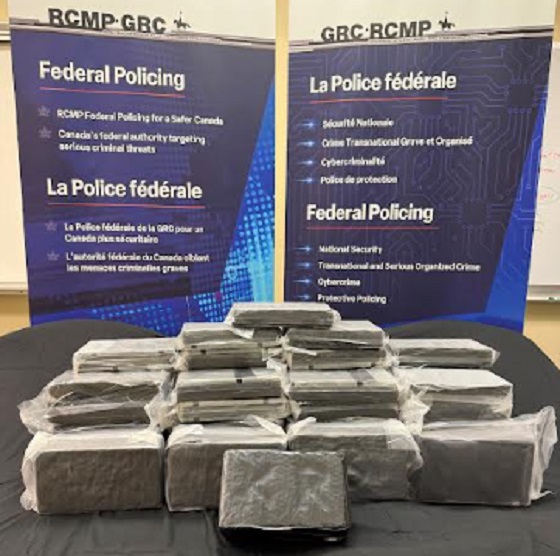Alberta
Moustaches for Men’s Health – The Meaning of Movember

It’s that time of year again! Whether it’s your least favorite month, or this is your time to shine – Movember is back!
 While the fun is certainly in the facial hair … Movember is more than just the opportunity to fill in those mutton chops or grow a socially acceptable handlebar moustache. The meaning of this month goes further than flexing the best (or worst) facial hair fashion, it’s the chance to take part in a global movement to support and promote men’s health.
While the fun is certainly in the facial hair … Movember is more than just the opportunity to fill in those mutton chops or grow a socially acceptable handlebar moustache. The meaning of this month goes further than flexing the best (or worst) facial hair fashion, it’s the chance to take part in a global movement to support and promote men’s health.
“The moustache is something of a Trojan Horse that encourages men to engage with their health and talk about the things they often don’t, but should,” says Mitch Hermansen, Western Canada Lead for Movember, “There’s no such thing as a bad moustache. They can all start conversations and save lives.”
Founded in 2003 among four friends, Movember is now the world’s leading men’s health charity, with more than 6 million global supporters all committed to changing the narrative surrounding male health and helping men live “happier, healthier, longer lives”.

The average life expectancy of a man is 6 years shorter than that of the average woman. Movember is working to minimize this gap by focusing on the three factors that pose the greatest risk to mens health worldwide: prostate cancer, testicular cancer and suicide.
Globally, there are 9.9 million men living with or experiencing the effects of prostate cancer. According to the American Cancer Society, prostate cancer is the second leading cause of cancer death in American men, with 1 in 9 men being diagnosed with prostate cancer in their lifetime, and approximately 1 in 41 men dying as a result.
Testicular cancer is the world’s most common cancer among men ages 15-39, and the American Cancer Society estimates 1 in every 250 males will develop testicular cancer during their lifetime. Education, early detection and effective treatments have put the survival rate for this diagnosis at greater than 95%, however the long-term side effects and impacts can have lasting negative implications on quality of life for survivors.
The Movember foundation works to minimize the global impact of these dominant male cancers by funding initiatives and collaborating with innovative global organizations that promote education, early detection and personalized and affordable treatment.
 As a holistic men’s health organization, the Movember approach prioritizes mental health as much as physical. Globally, the male suicide rate is shockingly high, with one man dying by suicide every minute of every day, and 6 out of 10 suicides being committed by men (1).
As a holistic men’s health organization, the Movember approach prioritizes mental health as much as physical. Globally, the male suicide rate is shockingly high, with one man dying by suicide every minute of every day, and 6 out of 10 suicides being committed by men (1).
Movember examines and addresses the complex structural factors that contribute to the male suicide rate and keep men from speaking out and seeking help. “We provide men with the tools, avenues and resources to support and engage with their own mental health,” says Hermansen, “as well as ways to support one another.” By facilitating a global conversation surrounding male health and focusing on the three top health risks men currently face worldwide, Movember aims to reduce the number of men dying prematurely by 25% by the year 2030.
This November, there are 4 opportunities to get involved with Movember and contribute to men’s health.
1. Grow your own Mo and raise funds with your face
2. Run or walk 60 km as a part of Move for Movember in recognition of the 60 men lost to suicide each hour, every hour
3. Gather a group and Host a virtual Mo-Ment, and have a good time for a good cause
4. Design your own fundraising challenge and Mo Your Own Way.

Visit movember.com to learn more about men’s health and how to get involved, or to create a profile and start fundraising.
For more stories, visit Todayville Calgary.
Alberta
Gondek’s exit as mayor marks a turning point for Calgary

This article supplied by Troy Media.
The mayor’s controversial term is over, but a divided conservative base may struggle to take the city in a new direction
Calgary’s mayoral election went to a recount. Independent candidate Jeromy Farkas won with 91,112 votes (26.1 per cent). Communities First candidate Sonya Sharp was a very close second with 90,496 votes (26 per cent) and controversial incumbent mayor Jyoti Gondek finished third with 71,502 votes (20.5 per cent).
Gondek’s embarrassing tenure as mayor is finally over.
Gondek’s list of political and economic failures in just a single four-year term could easily fill a few book chapters—and most likely will at some point. She declared a climate emergency on her first day as Calgary’s mayor that virtually no one in the city asked for. She supported a four per cent tax increase during the COVID-19 pandemic, when many individuals and families were struggling to make ends meet. She snubbed the Dec. 2023 menorah lighting during Hanukkah because speakers were going to voice support for Israel a mere two months after the country was attacked by the bloodthirsty terrorist organization Hamas. The
Calgary Party even accused her last month of spending over $112,000 in taxpayers’ money for an “image makeover and brand redevelopment” that could have benefited her re-election campaign.
How did Gondek get elected mayor of Calgary with 176,344 votes in 2021, which is over 45 per cent of the electorate?
“Calgary may be a historically right-of-centre city,” I wrote in a recent National Post column, “but it’s experienced some unusual voting behaviour when it comes to mayoral elections. Its last three mayors, Dave Bronconnier, Naheed Nenshi and Gondek, have all been Liberal or left-leaning. There have also been an assortment of other Liberal mayors in recent decades like Al Duerr and, before he had a political epiphany, Ralph Klein.”
In fairness, many Canadians used to support the concept of balancing their votes in federal, provincial and municipal politics. I knew of some colleagues, friends and family members, including my father, who used to vote for the federal Liberals and Ontario PCs. There were a couple who supported the federal PCs and Ontario Liberals in several instances. In the case of one of my late
grandfathers, he gave a stray vote for Brian Mulroney’s federal PCs, the NDP and even its predecessor, the Co-operative Commonwealth Federation.
That’s not the case any longer. The more typical voting pattern in modern Canada is one of ideological consistency. Conservatives vote for Conservative candidates, Liberals vote for Liberal candidates, and so forth. There are some rare exceptions in municipal politics, such as the late Toronto mayor Rob Ford’s populistconservative agenda winning over a very Liberal city in 2010. It doesn’t happen very often these days, however.
I’ve always been a proponent of ideological consistency. It’s a more logical way of voting instead of throwing away one vote (so to speak) for some perceived model of political balance. There will always be people who straddle the political fence and vote for different parties and candidates during an election. That’s their right in a democratic society, but it often creates a type of ideological inconsistency that doesn’t benefit voters, parties or the political process in general.
Calgary goes against the grain in municipal politics. The city’s political dynamics are very different today due to migration, immigration and the like. Support for fiscal and social conservatism may still exist in Alberta, but the urban-rural split has become more profound and meaningful than the historic left-right divide. This makes the task of winning Calgary in elections more difficult for today’s provincial and federal Conservatives, as well as right-leaning mayoral candidates.
That’s what we witnessed during the Oct. 20 municipal election. Some Calgary Conservatives believed that Farkas was a more progressive-oriented conservative or centrist with a less fiscally conservative plan and outlook for the city. They viewed Sharp, the leader of a right-leaning municipal party founded last December, as a small “c” conservative and much closer to their ideology. Conversely, some Calgary Conservatives felt that Farkas, and not Sharp, would be a better Conservative option for mayor because he seemed less ideological in his outlook.
When you put it all together, Conservatives in what used to be one of the most right-leaning cities in a historically right-leaning province couldn’t decide who was the best political option available to replace the left-wing incumbent mayor. Time will tell if they chose wisely.
Fortunately, the razor-thin vote split didn’t save Gondek’s political hide. Maybe ideological consistency will finally win the day in Calgary municipal politics once the recount has ended and the city’s next mayor has been certified.
Michael Taube is a political commentator, Troy Media syndicated columnist and former speechwriter for Prime Minister Stephen Harper. He holds a master’s degree in comparative politics from the London School of Economics, lending academic rigour to his political insights.
Troy Media empowers Canadian community news outlets by providing independent, insightful analysis and commentary. Our mission is to support local media in helping Canadians stay informed and engaged by delivering reliable content that strengthens community connections and deepens understanding across the country
Alberta
From Underdog to Top Broodmare

WATCH From Underdog to Top Broodmare (video)
Executive Producers Jeff Robillard (Horse Racing Alberta) and Mike Little (Shinelight Entertainment)
What began as an underdog story became a legacy of excellence. Crackers Hot Shot didn’t just race — she paved the way for future generations, and in doing so became one of the most influential producers the province has known.
The extraordinary journey of Crackers Hot Shot — once overlooked, now revered — stands as one of Alberta’s finest success stories in harness racing and breeding.
Born in humble circumstances and initially considered rough around the edges, Crackers Hot Shot overcame long odds to carve out a career that would forever impact the province’s racing industry. From a “wild, unhandled filly” to Alberta’s “Horse of the Year” in 2013, to producing foals who carry her spirit and fortitude into future generations.
Her influence ripples through Alberta’s racing and breeding landscape: from how young stock are prepared, to the aspirations of local breeders who now look to “the mare that did it” as proof that world-class talent can emerge from Alberta’s paddocks.
“Crackers Hot Shot, she had a tough start. She wasn’t much to look at when we first got her” — Rod Starkewski
“Crackers Hot Shot was left on her own – Carl Archibald heard us talking, he said ‘I’ll go get her – I live by there’. I think it took him 3 days to dig her out of the snow. She was completely wild – then we just started working on her. She really needed some humans to work with her – and get to know that people are not scary.” — Jackie Starkewski
“Crackers Hot Shot would be one of the top broodmares in Albeta percentage wise if nothing else. Her foals hit the track – they’re looking for the winners circle every time.” — Connie Kolthammer
Visit thehorses.com to learn more about Alberta’s Horse Racing industry.
-

 Alberta2 days ago
Alberta2 days agoFrom Underdog to Top Broodmare
-

 International2 days ago
International2 days agoNetanyahu orders deadly strikes on Gaza with over 100 dead despite ceasefire deal
-

 Business2 days ago
Business2 days agoCanada’s economic performance cratered after Ottawa pivoted to the ‘green’ economy
-

 Business1 day ago
Business1 day agoBank of Canada governor warns citizens to anticipate lower standard of living
-

 Agriculture1 day ago
Agriculture1 day agoCloned foods are coming to a grocer near you
-

 Business2 days ago
Business2 days agoCanadians paid $90 billion in government debt interest in 2024/25
-

 Fraser Institute1 day ago
Fraser Institute1 day agoOttawa continues to infringe in areas of provincial jurisdiction
-

 Alberta1 day ago
Alberta1 day agoGondek’s exit as mayor marks a turning point for Calgary











